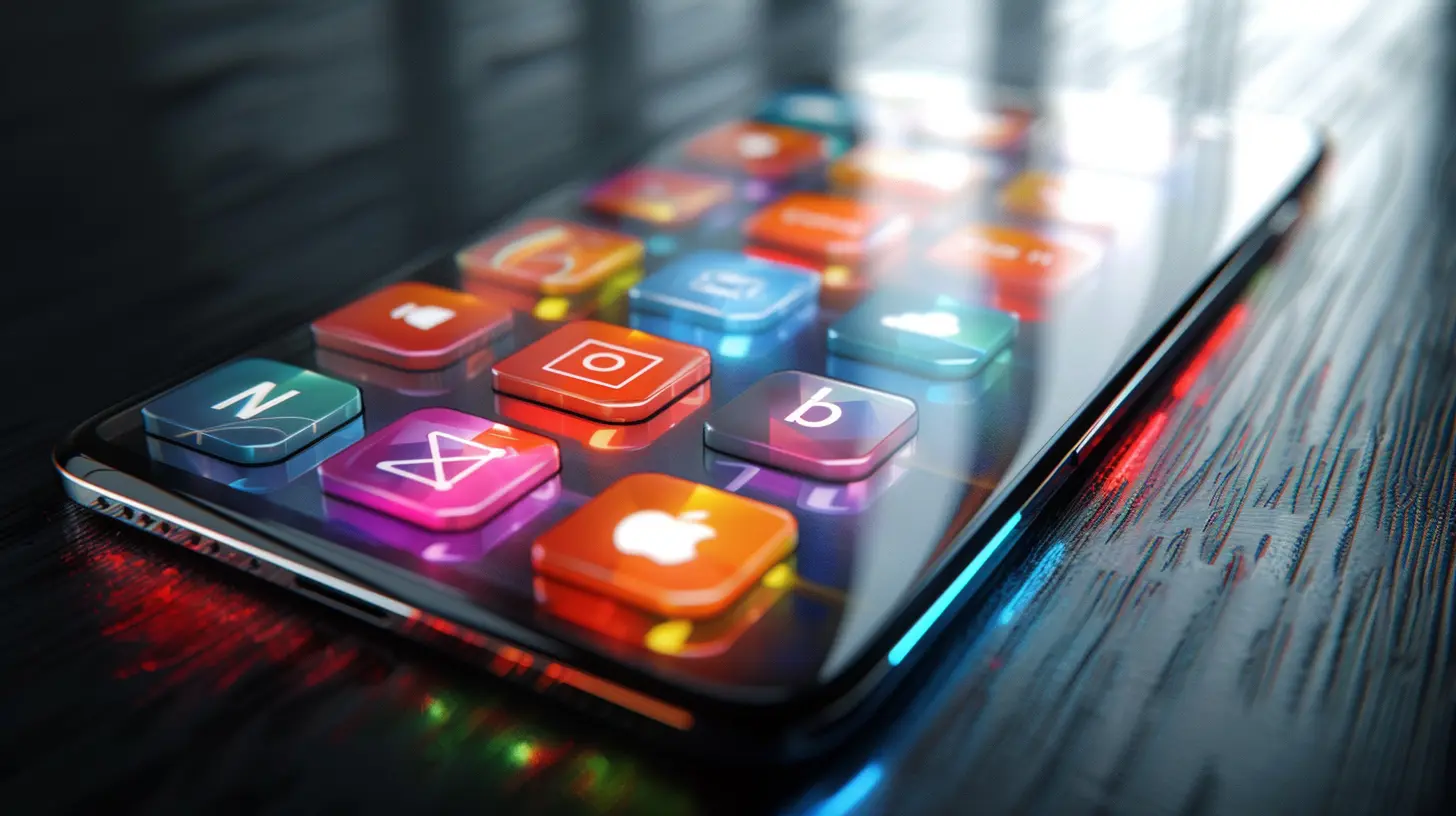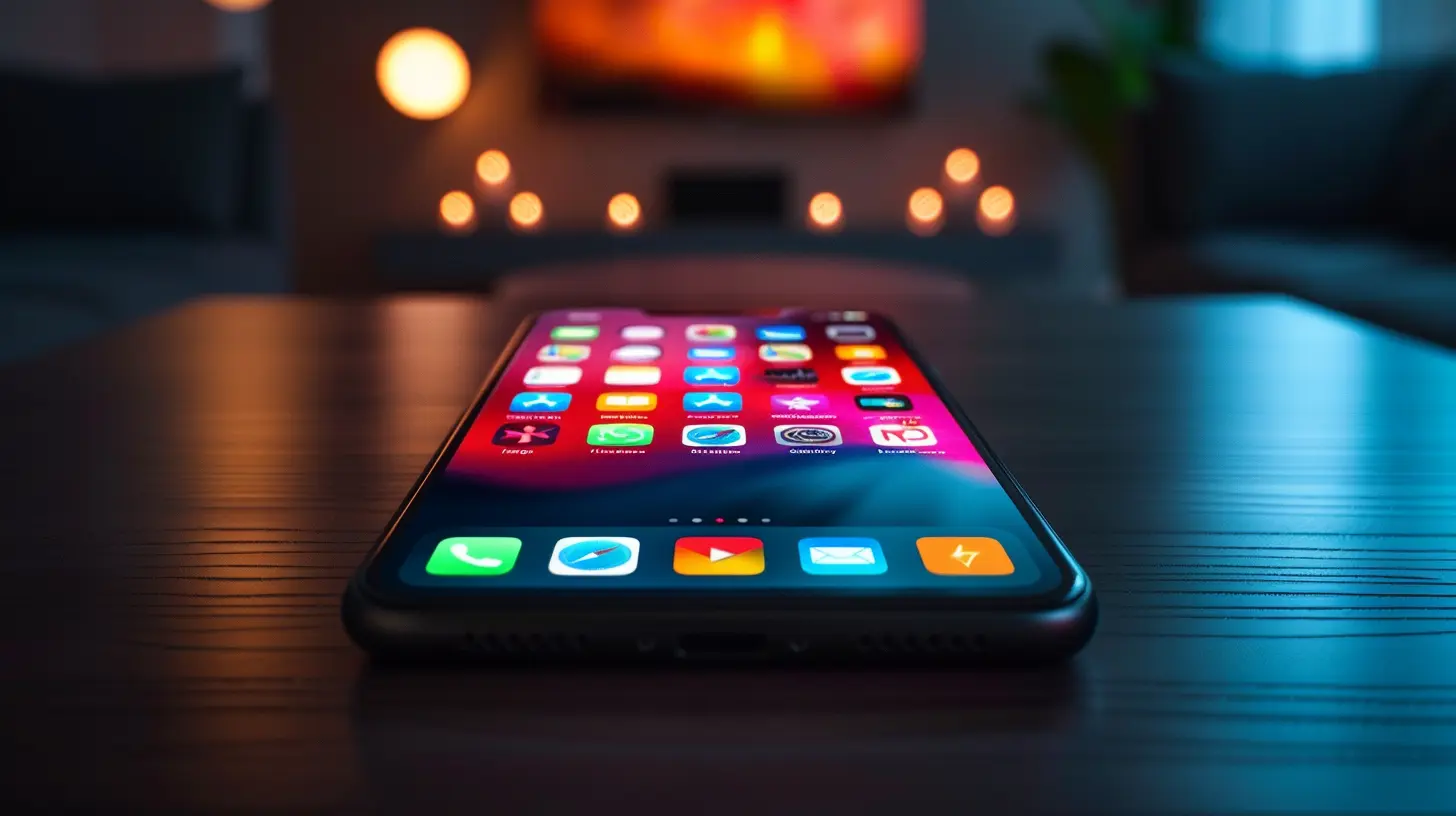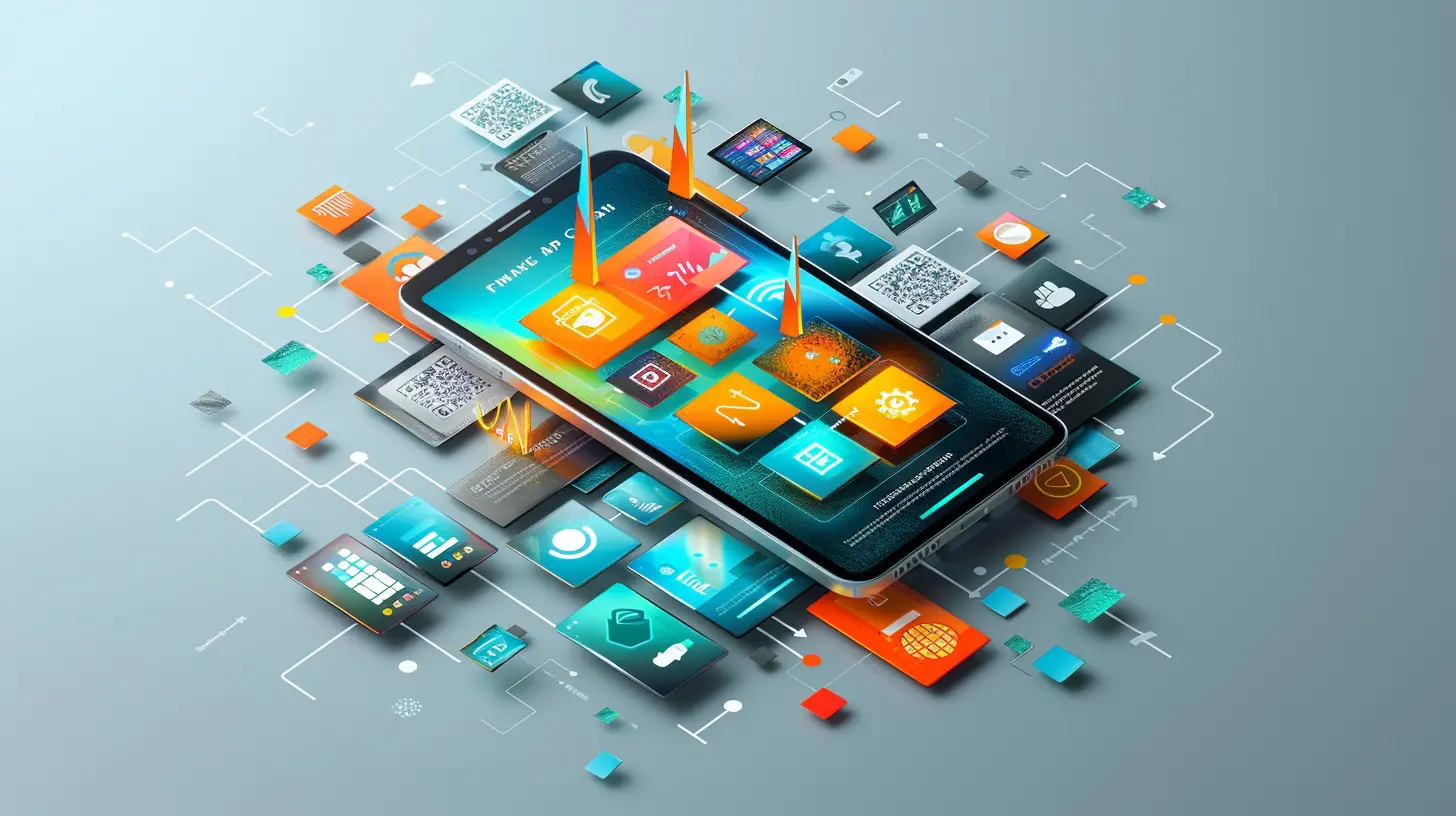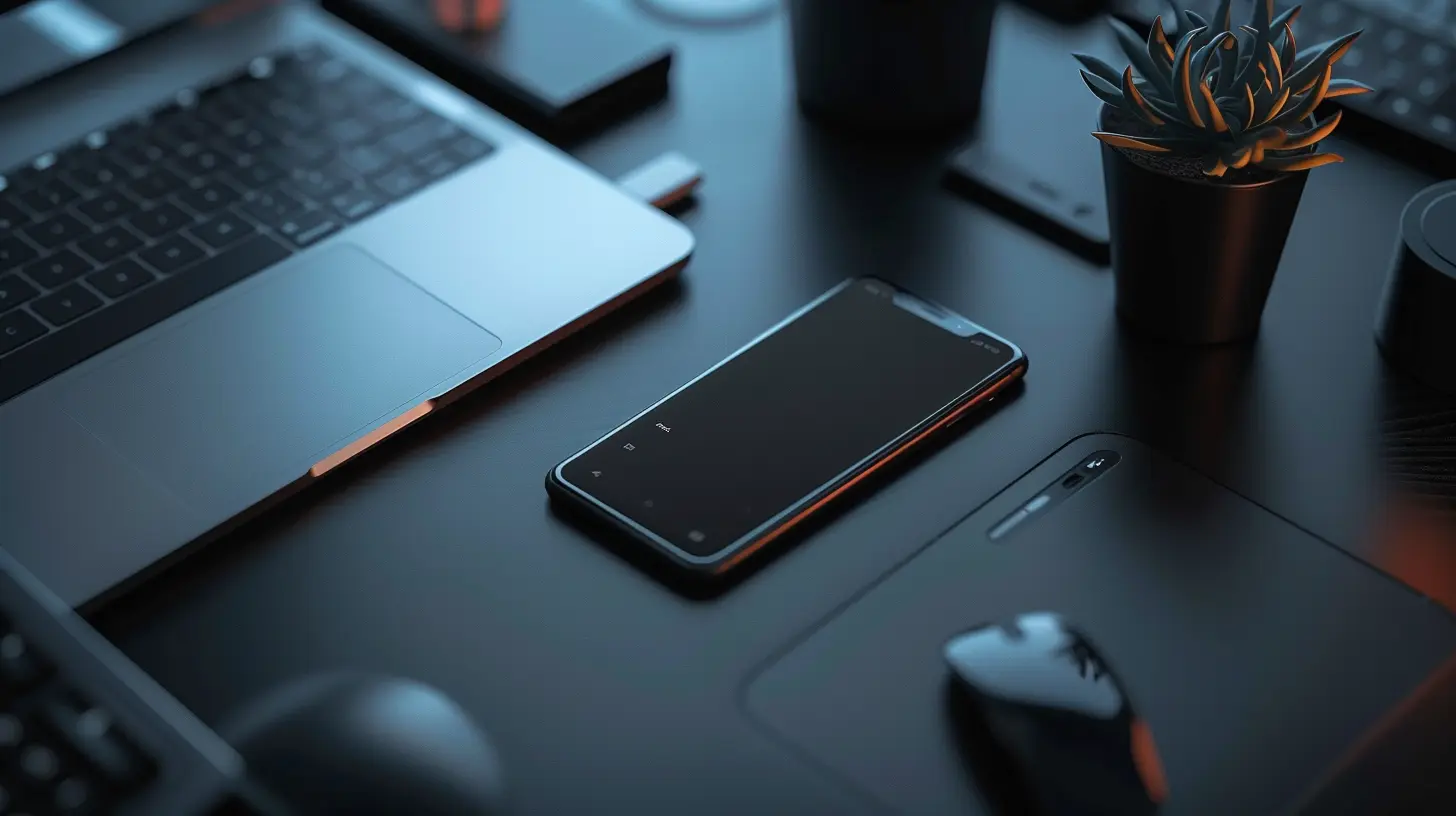The Future of Mobile App Design: Minimalism and Beyond
13 November 2024
Mobile apps. We can’t live without them, right? They’ve become such an integral part of our daily lives that it's hard to imagine a world without them. Whether you're ordering food, chatting with friends, or managing your to-do list, there's an app for just about everything. But if you take a close look at the apps on your phone, you might notice a common theme: simplicity.
Minimalism has taken the mobile app world by storm, and it’s not just a passing trend. It’s here to stay. But what happens when minimalism reaches its peak? What lies beyond? In this article, we’ll dive deep into the future of mobile app design, exploring where minimalism is headed and what new trends are emerging on the horizon.

What is Minimalism in Mobile App Design?
Before we talk about the future, let’s get on the same page about what minimalism actually means in the context of mobile app design.Minimalism is all about stripping away the unnecessary. Less is more, right? The idea is to create a user interface (UI) that’s clean, simple, and easy to navigate. No clutter. No distractions. Just a seamless experience that allows users to focus on what matters most.
Key Elements of Minimalistic Design:
- Whitespace: Also known as negative space, this is the empty space around elements in the design. It gives the content room to breathe.- Simple Color Scheme: Minimalistic designs often use a limited color palette, sticking to basic or muted tones.
- Typography: Font choices are straightforward, without too many styles or sizes.
- Flat Design: Instead of flashy 3D elements or gradients, minimalistic apps use flat illustrations and straightforward icons.
- Focus on Functionality: Every design element serves a purpose. If it's not essential, it's not included.
Sounds refreshing, doesn’t it? It’s no wonder why so many app designers have embraced this approach. But as we move forward, we might start asking ourselves: is minimalism enough?

Why Minimalism Works So Well in Mobile Apps
Let’s be honest. We all want things to be easy, right? Nobody likes fumbling around with confusing buttons or getting lost in a sea of options. Minimalism speaks to that desire for simplicity. It gives users what they need, without overwhelming them.Here’s why minimalism works so well in mobile app design:
1. Speed and Efficiency
A cluttered app with too many features can slow down load times and make navigation a nightmare. Minimalistic designs, with fewer elements to load, help apps run faster and smoother. And in today’s fast-paced world, speed is everything.2. User-Centered Design
The entire goal of minimalism is to make things easier for the user. By cutting out the excess, users can focus on what they came to the app to do. Whether it’s sending a message or checking the weather, minimalistic designs make it more intuitive.3. Consistency Across Devices
With so many different screen sizes and devices out there, it’s important for apps to look and function well across the board. Minimalistic designs tend to be more versatile, ensuring a consistent experience on both a high-end tablet or a budget smartphone.4. Visual Appeal
There’s something undeniably sleek and modern about minimalistic designs. They feel polished and professional, which can enhance the overall user experience.But here’s the million-dollar question: What comes next? Is there a future beyond minimalism?

The Evolution of Minimalism: Where is it Headed?
Minimalism has been reigning supreme in the mobile app world for a few years now. But like all trends, it’s starting to evolve. Designers are pushing the boundaries, looking for ways to maintain simplicity while adding depth and personality. So, what can we expect as minimalism continues to evolve?1. Neumorphism
Neumorphism (short for new skeuomorphism) is one of the hottest trends in UI design right now. It’s a blend of flat design and skeuomorphism (think realistic textures and shadows), creating a soft, almost 3D look. Buttons and icons appear to pop out of the screen, like they’re physically part of the interface.While it’s still minimalist in nature, neumorphism adds a bit more flair, giving designs a tactile quality that flat designs lack.
2. Dark Mode
Dark mode has become a game-changer in mobile app design. It’s not just about aesthetics – it’s about functionality too. Dark mode reduces eye strain, especially in low-light environments, and it can help save battery life on OLED screens.As more apps embrace dark mode, designers are finding creative ways to make it feel minimalistic without being boring. Think contrasting colors, sleek icons, and subtle animations.
3. Microinteractions
Microinteractions are small, subtle animations or feedback loops that occur when users interact with an app. For example, when you “like” a post on social media, you might see a little heart animation. These tiny details enhance the user experience without overwhelming the minimalist design.Expect to see more microinteractions in the future, as designers look for ways to engage users without cluttering the interface.
4. Voice and Gesture Controls
Voice interfaces like Siri, Google Assistant, and Alexa are becoming increasingly popular, and they’re changing the way we interact with apps. Why click a button when you can just say a command?As voice technology improves, we’ll likely see more apps embrace voice controls as an alternative to traditional navigation. This could lead to even more minimalist designs, as physical UI elements become less necessary.
Similarly, gesture controls (like swiping or pinching) are becoming more intuitive. These controls can replace buttons, making the UI even cleaner and more minimalistic.
5. Augmented Reality (AR)
Augmented Reality is another exciting trend that could take minimalism to the next level. Rather than cluttering the screen with information, AR can overlay digital elements onto the real world. For example, instead of having a dense menu screen, a restaurant app could use AR to show the menu when you point your phone at the table.AR has the potential to simplify app interfaces even further, by shifting some of the interactions away from the screen and into the real world.
6. Personalized Minimalism
Minimalism doesn’t have to mean “one size fits all.” In the future, we’ll likely see more apps offering personalized minimalistic designs. This means tailoring the design and features to each user’s preferences and behaviors.For example, an app might learn that you always use certain features and hide the ones you don’t use. Or, it might adjust the layout based on how you interact with it. This kind of smart design could take minimalism to a whole new level.

Beyond Minimalism: What’s Next?
So, we’ve talked about how minimalism is evolving, but what lies beyond? Is there something after minimalism?1. Maximalism?
It might sound counterintuitive after all this talk of stripping things down, but there’s a growing interest in “maximalist” designs. Maximalism is all about embracing bold colors, intricate patterns, and detailed visuals. It’s a direct response to the minimalistic trend, offering a more expressive and artistic alternative.While maximalism might not take over the entire mobile app design world, we could see it gaining traction in certain niches, like gaming apps or creative tools.
2. Hyper-Personalization
We touched on personalization earlier, but the future could be even more personalized than we imagine. Imagine an app that changes its design based on your mood or the time of day. Or an app that dynamically adjusts its interface based on your current activity. This kind of hyper-personalization could create a more immersive and engaging experience for users.3. AI-Assisted Design
Artificial Intelligence (AI) is already being used in some aspects of app design, but its potential is far from fully realized. In the future, AI could play a larger role in designing app interfaces on the fly. Imagine an app that updates its layout based on how you use it, or one that recommends design changes to improve usability.AI can also help designers create more accessible apps, by automatically adjusting font sizes, colors, and layouts for users with different needs.
Conclusion: The Future is Bright (and Simple)
The future of mobile app design is exciting, to say the least. While minimalism has been the dominant trend for a while, it’s evolving in new and interesting ways. From neumorphism to microinteractions to voice controls, designers are finding creative ways to enhance simplicity without sacrificing function or aesthetics.Beyond minimalism, we can expect to see more personalized and immersive experiences, thanks to advancements in AI, AR, and hyper-personalization. And while maximalism might not take over completely, it could offer a bold alternative for certain types of apps.
So, what does this mean for you as a user? Simply put, the apps of the future will be more intuitive, more engaging, and more tailored to your needs. And isn’t that what we all want?
all images in this post were generated using AI tools
Category:
App DevelopmentAuthor:

Michael Robinson
Discussion
rate this article
22 comments
Echo McKale
Great insights! Excited to see how minimalism shapes the future of mobile app design!
February 18, 2025 at 1:06 PM

Michael Robinson
Thank you! I’m excited too—minimalism can truly transform the user experience!
Ariadne McClure
This article thoughtfully explores the shift towards minimalism in mobile app design, emphasizing user experience and functionality. Excited to see what's next!
February 5, 2025 at 4:14 AM

Michael Robinson
Thank you for your feedback! I'm glad you found the exploration of minimalism impactful. Exciting innovations are on the horizon!
Barbara McWilliams
What an exciting read! Embracing minimalism in mobile app design opens up endless possibilities for creativity and user experience. Can't wait to see how designers push boundaries in the future! 🌟📱
January 30, 2025 at 11:47 AM

Michael Robinson
Thank you! I'm thrilled you enjoyed it! Minimalism truly paves the way for innovative designs and enhanced user experiences. Exciting times ahead! 🌟
Gavin Kirk
As we embrace minimalism in mobile app design, it's essential to balance simplicity with functionality. Stripping away excess can enhance user experience, but we must also ensure that vital features remain accessible. The future lies not just in less, but in smart, purposeful design that anticipates user needs.
January 26, 2025 at 12:00 PM

Michael Robinson
Absolutely! Striking the right balance between minimalism and functionality is key. Thoughtful design that prioritizes user needs while maintaining simplicity will shape the future of mobile app experiences.
Damian McLemore
The evolution of mobile app design is increasingly favoring minimalism, which enhances user experience by reducing clutter. Future trends will likely incorporate innovative functionalities while maintaining simplicity to meet user expectations effectively.
January 22, 2025 at 3:38 AM

Michael Robinson
Thank you for your insight! I completely agree—minimalism not only streamlines user experience but also sets the stage for innovative features that enhance usability while keeping interfaces clean and intuitive.
Maxwell Simmons
Exciting times ahead! Embracing minimalism in mobile app design opens doors to creativity and user-friendly experiences. Let the innovation begin! 🌟📱
January 19, 2025 at 1:20 PM

Michael Robinson
Absolutely! Embracing minimalism truly enhances creativity and user experience—excited to see where this innovation leads us! 🌟
Alexander McMurtry
This article insightfully explores minimalism's role in mobile app design and its future possibilities.
January 16, 2025 at 1:42 PM

Michael Robinson
Thank you for your feedback! I'm glad you found the article insightful. Minimalism truly shapes the future of mobile app design in exciting ways.
Zephira Monroe
Absolutely loved this article! 🌟 The shift towards minimalism in mobile app design is truly exciting. It not only enhances user experience but also sparks creativity in developers. Can't wait to see how innovation unfolds beyond minimalism in the app world! Keep it coming! 🚀
January 9, 2025 at 8:04 PM

Michael Robinson
Thank you so much for your kind words! I'm thrilled you enjoyed the article. Exciting times ahead for app design! 🚀
Lorna Sawyer
Great insights! Embracing minimalism in app design truly enhances user experience and fosters connection. Keep inspiring creativity!
January 2, 2025 at 4:11 AM

Michael Robinson
Thank you! I'm glad you found the insights valuable. Embracing minimalism is indeed key to enhancing user experiences!
Zanthe Cantu
This article beautifully captures the essence of where mobile app design is heading. Embracing minimalism while exploring innovative possibilities resonates deeply in our fast-paced world. Excited to see how these trends shape user experiences and foster creativity in the tech landscape. Well done!
December 28, 2024 at 8:07 PM

Michael Robinson
Thank you for your thoughtful feedback! I'm glad the article resonated with you. Exciting times lie ahead for mobile app design!
Summer Campbell
How will emerging technologies reshape minimalist mobile app design trends?
December 18, 2024 at 5:02 AM

Michael Robinson
Emerging technologies like AI, augmented reality, and voice interfaces will enhance minimalist app design by enabling smarter interactions and streamlined user experiences, allowing for greater focus on core functionalities and aesthetics.
Paul McWhorter
Minimalism in app design: because who needs clutter when you can just blame your phone's battery life?
December 10, 2024 at 4:34 AM

Michael Robinson
Great point! Minimalism not only enhances user experience but also helps optimize battery life. It’s a win-win!
Gabriel McKellar
Great insights on minimalism in mobile app design! Emphasizing user experience and simplicity is crucial, but it would be interesting to explore how emerging technologies like AI and AR might shape future design trends. Looking forward to more discussions on this!
December 3, 2024 at 1:08 PM

Michael Robinson
Thank you for your comment! I completely agree—AI and AR will certainly play pivotal roles in shaping the future of mobile app design. Excited to explore these trends further in upcoming discussions!
Troy Barrett
Less is more—simplicity speaks volumes in design!
December 1, 2024 at 3:39 AM

Michael Robinson
Absolutely! Embracing simplicity in design enhances user experience and allows functionality to shine, paving the way for innovative, minimalist app solutions.
Celine Becker
This article insightfully explores the shift towards minimalism in mobile app design, emphasizing user experience over aesthetics. It highlights emerging trends like augmented reality and adaptive interfaces, crucial for engaging users in an increasingly complex digital landscape.
November 29, 2024 at 5:02 AM

Michael Robinson
Thank you for your thoughtful comment! I'm glad you found the exploration of minimalism and emerging trends in mobile app design insightful. Your engagement with the topic is much appreciated!
Lexi McCullough
This article beautifully captures the evolving landscape of mobile app design, emphasizing minimalism while hinting at exciting innovations that lie ahead.
November 27, 2024 at 11:23 AM

Michael Robinson
Thank you! I'm glad you found the article insightful. It’s an exciting time for mobile app design!
Chloe Pope
Exciting insights! I'm curious to see how minimalism evolves in mobile app design and what innovative features might emerge next. Let's explore!
November 24, 2024 at 5:08 AM

Michael Robinson
Thank you! I share your excitement about the future of minimalism in mobile app design—it's bound to inspire some innovative features that enhance user experience. Let's keep the conversation going!
Chantal McGinnis
Great insights on the evolving landscape of mobile app design! I appreciate how you've highlighted minimalism as a key trend, while encouraging exploration beyond it. Excited to see how designers will innovate in creating user-friendly experiences that simplify our digital interactions.
November 21, 2024 at 1:17 PM

Michael Robinson
Thank you for your thoughtful feedback! I'm glad you found the insights valuable and share the excitement for future innovations in user-friendly design.
Oscar Forbes
Minimalism is great, but let’s not forget: bold design speaks louder than whispers!
November 20, 2024 at 12:36 PM

Michael Robinson
Absolutely! While minimalism has its charm, bold design can create impactful experiences that truly engage users. It’s all about finding the right balance.
Wyatt Carrillo
Minimalism is not just a trend; it's the foundation for intuitive design. Embracing simplicity will redefine user experiences and drive the future of mobile apps.
November 18, 2024 at 12:40 PM

Michael Robinson
Thank you for your insightful comment! I completely agree—minimalism is essential for enhancing user experience and shaping the future of mobile app design.
Phaedra McTiernan
This article beautifully captures the essence of evolving mobile app design. Embracing minimalism while exploring innovative ideas is crucial for creating user-friendly experiences. It's exciting to think about how these changes will enhance accessibility and usability for everyone, making technology more connected and intuitive. Thank you for sharing these insights!
November 17, 2024 at 11:52 AM

Michael Robinson
Thank you for your thoughtful comment! I'm glad you resonated with the ideas presented in the article. Embracing minimalism truly has the potential to transform user experiences in meaningful ways.
Quill Hunter
This article offers valuable insights into the evolution of mobile app design. Emphasizing minimalism as a key trend, it effectively highlights the importance of user experience. I’m excited to see how designers will innovate beyond minimalism while maintaining functionality and aesthetics in future apps.
November 13, 2024 at 10:27 AM

Michael Robinson
Thank you for your thoughtful comment! I'm glad you found the insights valuable, and I share your excitement about the future of mobile app design as we explore new innovations beyond minimalism.
MORE POSTS

Travel-Friendly Gadgets for Long Train Rides

The Future of Public Transportation: Green Tech Solutions for Cleaner Cities

Phishing Scams You Need to Avoid: A Comprehensive Guide

How to Use Depth of Field to Your Advantage in Digital Photography

How to Edit Digital Camera Photos Like a Professional

The Promise of Ocean Energy: How Tidal Power Could Change the Grid

The Best Wearable Tech for Monitoring Your Sleep Patterns

How Robots Are Enhancing Elderly Care and Independence

The Rise of Big Data in Sports Analytics

Elevating Your Workflow: The Best New Tools for Digital Creators

E-Bikes for the City: Which One Should You Ride?

Visual Storytelling: Tools That Help You Create Compelling Narratives

Why Cybersecurity Should Be a Priority for Every Tech Startup